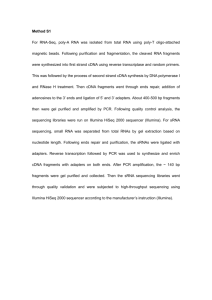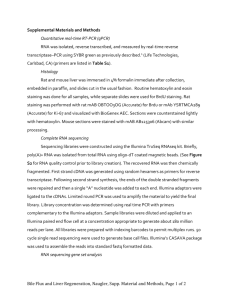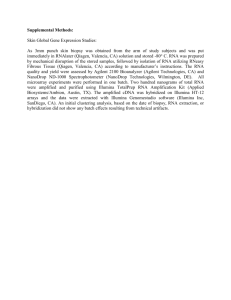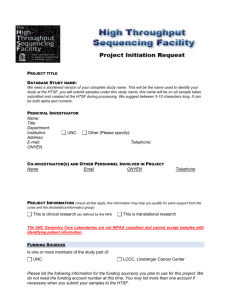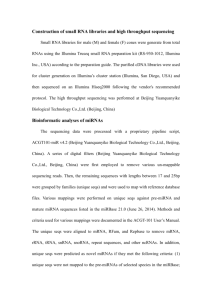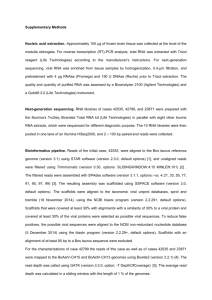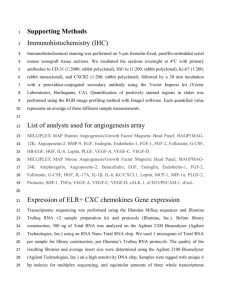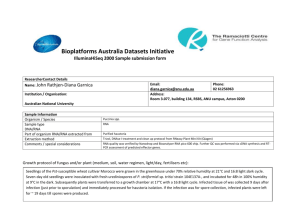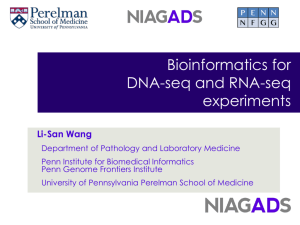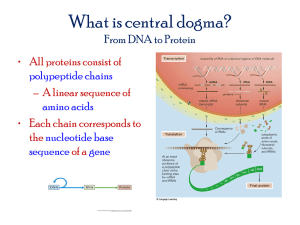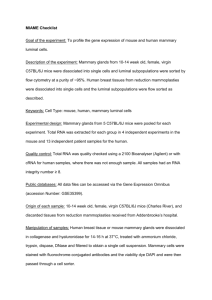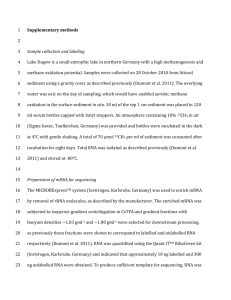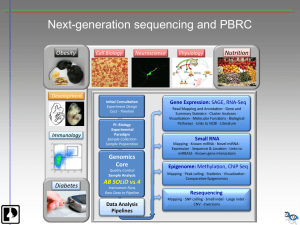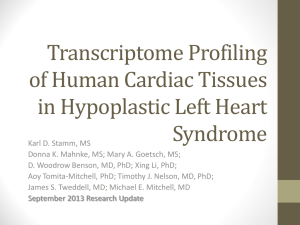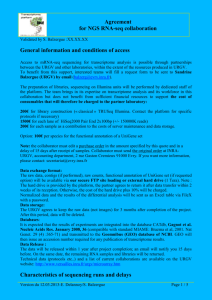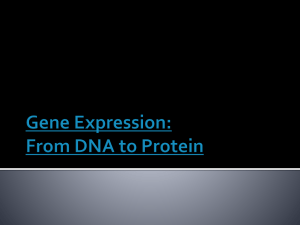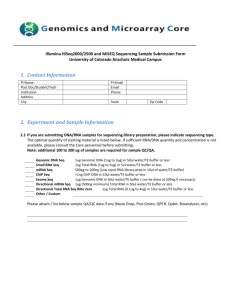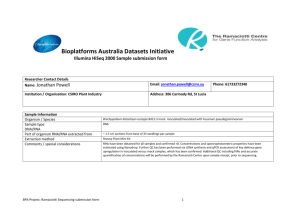Experimental Procedures for Grant Write-Up (Illumina
advertisement
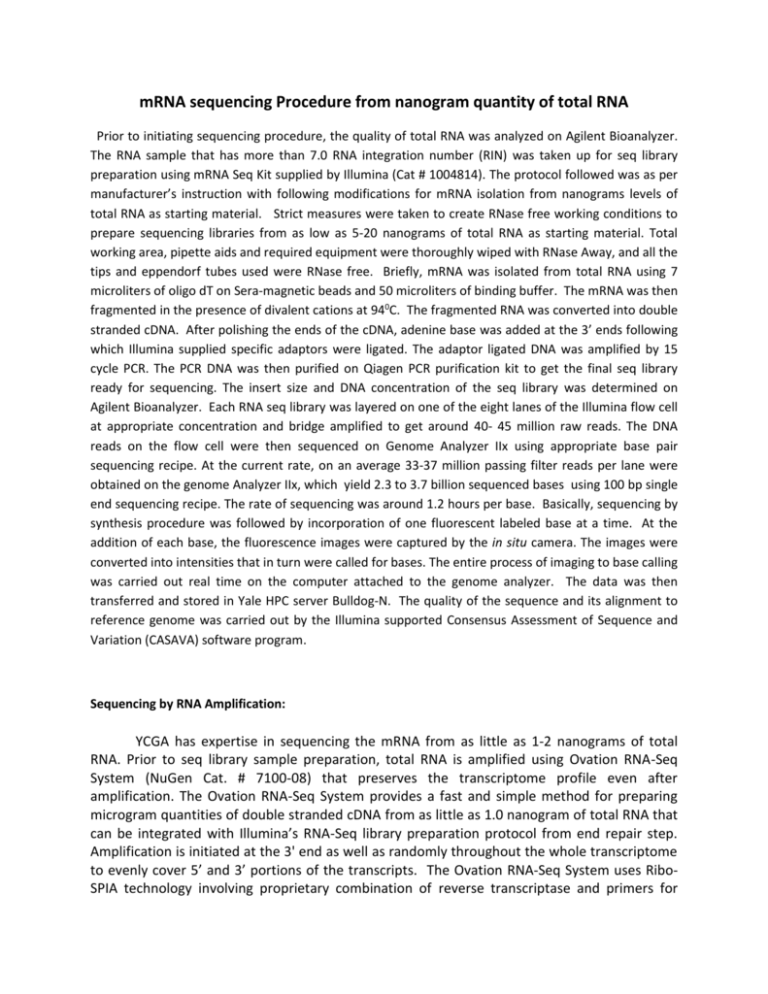
mRNA sequencing Procedure from nanogram quantity of total RNA Prior to initiating sequencing procedure, the quality of total RNA was analyzed on Agilent Bioanalyzer. The RNA sample that has more than 7.0 RNA integration number (RIN) was taken up for seq library preparation using mRNA Seq Kit supplied by Illumina (Cat # 1004814). The protocol followed was as per manufacturer’s instruction with following modifications for mRNA isolation from nanograms levels of total RNA as starting material. Strict measures were taken to create RNase free working conditions to prepare sequencing libraries from as low as 5-20 nanograms of total RNA as starting material. Total working area, pipette aids and required equipment were thoroughly wiped with RNase Away, and all the tips and eppendorf tubes used were RNase free. Briefly, mRNA was isolated from total RNA using 7 microliters of oligo dT on Sera-magnetic beads and 50 microliters of binding buffer. The mRNA was then fragmented in the presence of divalent cations at 940C. The fragmented RNA was converted into double stranded cDNA. After polishing the ends of the cDNA, adenine base was added at the 3’ ends following which Illumina supplied specific adaptors were ligated. The adaptor ligated DNA was amplified by 15 cycle PCR. The PCR DNA was then purified on Qiagen PCR purification kit to get the final seq library ready for sequencing. The insert size and DNA concentration of the seq library was determined on Agilent Bioanalyzer. Each RNA seq library was layered on one of the eight lanes of the Illumina flow cell at appropriate concentration and bridge amplified to get around 40- 45 million raw reads. The DNA reads on the flow cell were then sequenced on Genome Analyzer IIx using appropriate base pair sequencing recipe. At the current rate, on an average 33-37 million passing filter reads per lane were obtained on the genome Analyzer IIx, which yield 2.3 to 3.7 billion sequenced bases using 100 bp single end sequencing recipe. The rate of sequencing was around 1.2 hours per base. Basically, sequencing by synthesis procedure was followed by incorporation of one fluorescent labeled base at a time. At the addition of each base, the fluorescence images were captured by the in situ camera. The images were converted into intensities that in turn were called for bases. The entire process of imaging to base calling was carried out real time on the computer attached to the genome analyzer. The data was then transferred and stored in Yale HPC server Bulldog-N. The quality of the sequence and its alignment to reference genome was carried out by the Illumina supported Consensus Assessment of Sequence and Variation (CASAVA) software program. Sequencing by RNA Amplification: YCGA has expertise in sequencing the mRNA from as little as 1-2 nanograms of total RNA. Prior to seq library sample preparation, total RNA is amplified using Ovation RNA-Seq System (NuGen Cat. # 7100-08) that preserves the transcriptome profile even after amplification. The Ovation RNA-Seq System provides a fast and simple method for preparing microgram quantities of double stranded cDNA from as little as 1.0 nanogram of total RNA that can be integrated with Illumina’s RNA-Seq library preparation protocol from end repair step. Amplification is initiated at the 3' end as well as randomly throughout the whole transcriptome to evenly cover 5’ and 3’ portions of the transcripts. The Ovation RNA-Seq System uses RiboSPIA technology involving proprietary combination of reverse transcriptase and primers for preferential priming and subsequent amplification of non-rRNA sequences. Reads mapping to rRNA sequences are minor, which fall in the range of 3.0% to 4%.
